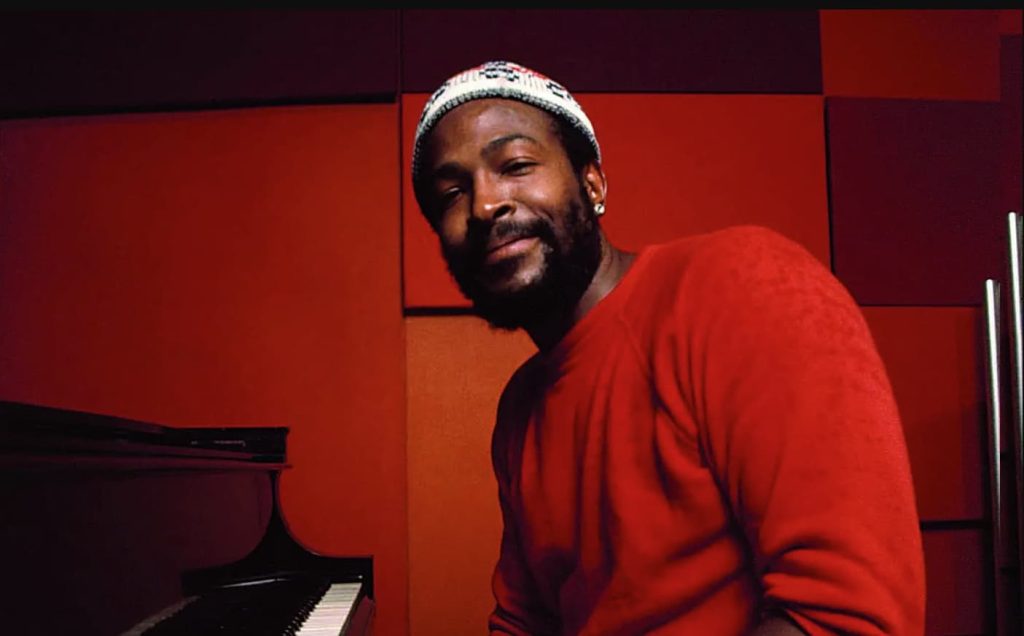
Marvin Gaye – “Let’s Get It On”: A Sultry Anthem of Love and Intimacy
Marvin Gaye’s “Let’s Get It On” is an iconic soul classic that explores themes of love, passion, and connection with unmatched sensuality and sophistication. Released in 1973 as the lead single from the album of the same name, the song became an instant hit, reaching No. 1 on the Billboard Hot 100 and Hot R&B Singles charts. Written by Marvin Gaye and Ed Townsend, the track blends heartfelt emotion with irresistible grooves, making it one of Gaye’s most enduring and celebrated works.
The song opens with a warm, seductive guitar riff and subtle orchestral strings, immediately setting a sultry, romantic tone. The rhythm is smooth and steady, creating a lush sonic backdrop that invites the listener into a world of intimacy and connection. The arrangement, characterized by its layered instrumentation and seamless transitions, reflects Gaye’s ability to craft music that feels both effortless and deeply emotional.
Lyrically, “Let’s Get It On” is an unabashed celebration of love and physical connection. Lines like “There’s nothing wrong with me loving you” and “Giving yourself to me can never be wrong if the love is true” convey a message of openness and sincerity. The song balances its sensual undertones with a sense of genuine affection, making it as much about emotional connection as it is about physical intimacy.
The chorus, “Let’s get it on, let’s get it on,” is simple yet powerfully evocative. Its repetition reinforces the song’s theme of surrendering to love and desire, while the smooth melody and harmonies make it instantly memorable. The chorus acts as both an invitation and a reassurance, creating an atmosphere of comfort and passion that resonates universally.
Marvin Gaye’s vocal performance is the heart and soul of the track. His voice is rich, expressive, and imbued with a blend of tenderness and intensity. Gaye’s ability to convey both vulnerability and confidence elevates the song, making every line feel personal and heartfelt. His use of falsetto adds an ethereal quality, while his soulful delivery grounds the track in raw, authentic emotion.
The production, guided by Gaye and Townsend, is a masterclass in subtlety and sophistication. The use of strings, horns, and a tight rhythm section creates a sound that is lush and immersive without overshadowing the vocals. The interplay between the instruments mirrors the song’s theme of harmony and connection, adding depth to the overall composition. The groove is unmistakably soulful, making it a hallmark of Gaye’s style and a staple of 1970s R&B.
“Let’s Get It On” was not only a commercial success but also a cultural milestone, cementing Marvin Gaye’s status as one of the most influential artists of his time. Its themes of love and desire, delivered with elegance and honesty, resonated deeply with audiences, helping to redefine the boundaries of romantic expression in popular music.
The song’s legacy has only grown over the decades. It has been featured in countless movies, TV shows, and commercials, often as a symbol of romance and attraction. Its influence can be heard in the works of artists across genres, and its timeless appeal ensures that it continues to inspire new generations of listeners.
In the end, “Let’s Get It On” is more than just a love song—it’s a masterpiece of soulful expression that celebrates the beauty of human connection. Marvin Gaye’s sensual performance, combined with the song’s impeccable production and universal themes, creates a track that transcends time and remains as relevant and impactful today as it was upon its release. For fans of R&B and anyone who appreciates music that speaks to the heart and soul, “Let’s Get It On” is an unforgettable classic.